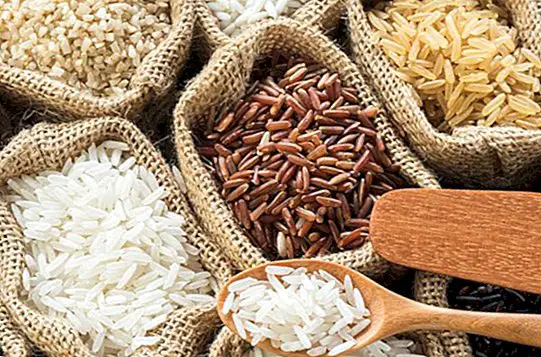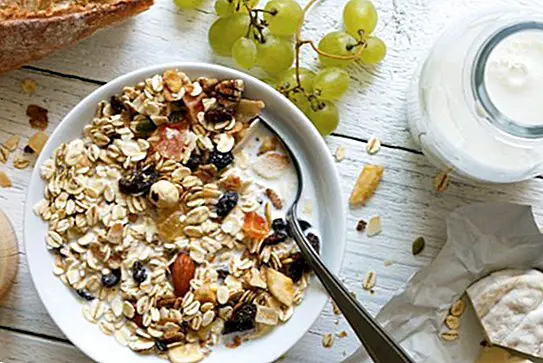The arrival of the first menstruation: everything there is to know
The first menstruation or menarche is the first bleeding that occurs in girls when they are beginning puberty. With the beginning of puberty we are leaving childhood behind to gradually go into adolescence.
The age at which the first bleeding appears is not the same in all the girls, some will begin earlier, others a little later, and will also depend on some factors such as: genetic factors, health status, nutritional status, where you live if you are or not above sea level, the climate where you live, the race, if you do any intense sports activity ...
At what age does the first menstruation arrive and what changes occur?
The age pattern by which we can be guided places the beginning of puberty between 8 years and 14 years. The onset of puberty brings about physical changes and in girls occurs earlier than in children:
- Increase in height.
- The breasts begin to develop.
- The hair appears in the armpits and in the pubis.
- Changes in the skin occur.
- Appearance of acne.
- Body odor.
- Appearance of the first menstruation.
Menstruation begins on the day the first bleeding occurs and usually lasts around 3 and 7 days. Normally the menstrual cycle is 28 dayss and understands from the first day of bleeding and ends one day before the next menstruation.

A menstrual cycle that lasts between 21 and 35 days is also considered normal.
From this moment and with the start of the first menstruation the menstrual cycle will occur every month until the age of menopause. During pregnancy and lactation menstruation also stops.
There are occasions when the first menstruations are irregular, until the child's body adapts to the changes and new functioning could have irregular cycles, and be a few months without seeing the appearance of the next menstruation.
With the appearance of the first menstruation it is advisable to take it to the gynecologist to do the first check and check that your body is well.
For other reasons, menstruation can be irregular when it is altered by some external factors such as stress, emotional changes, food.
Menstruation involves a change in your life, not only physical changes but also emotional and character changes, are disoriented and, although they have already received information about these changes, it is normal that at that time they can not avoid the impact that It produces them.
In these moments the mother figure plays a very important role in her, to serve as support in the face of these new changes in her life.
It is important that both the mother and the father support her in these moments helping her, guiding her and respecting their privacy and independence.

The mother, as a woman who has already passed through these moments, knows that in the face of these changes her body needs to be strengthened, it is time to strengthen your diet.
Discover how to strengthen your diet
The bleeding will not always be the same during all the days it lasts, the first days more blood is lost, the last days will decrease, the same will not happen every month, some months more bleeding will occur than in another.
The feeding of the girl from these moments is not equal to that of children her age.
She will need the double iron that they to replace in part the iron that could escape in the bleedings.
Also to avoid fatigue, fatigue and weakness that you will notice before the loss of this mineral.
When the loss of iron is considerable, it can lead to anemia.
In addition to strengthening the diet with this mineral, it is also important to increase the intake of foods rich in vitamin B, especially vitamin B6, in your diet.
The Group B vitamins They will also help you to cope with the reluctance, apathy that in those days also shows us girls, foods rich in serotonin such as bananas, dates, tropical pineapple.
The vitamin B6 helps to reduce menstrual pain, whole grains, nuts, green leafy vegetables.
Foods rich in potassium to help eliminate liquids, reduce inflammation and not retain them, tomatoes, lettuce, Brussels sprouts, potatoes, asparagus, spinach, peas, endives, borage, radishes, celery, carrots.
To absorb the iron in the food well, it is good to introduce fruits rich in vitamin C, all citrus fruits, kiwi, strawberries and the rest of the red fruits in the diet.
The necessary fruits rich in bromelain and manganese like pineapple, mango, will help strengthen muscles and prevent possible menstrual cramps.
Green leafy vegetables as, spinach, watercress, Swiss chard, broccoli, cabbage, are rich in vitamins, magnesium, calcium, potassium, these vitamins and minerals will help less bleeding, relieve and prevent possible spasms, also help to calm irritability.
Foods rich in omega 3 essential oils, like blue fish, nuts mostly walnuts, flax seeds.

Milk, yogurt, other dairy products are a good source of calcium, this mineral must be reinforced and must be consumed daily.
Hydrate it well, make her aware that she must drink at least a liter and a half or two liters of water a day, during menstruation fluid is usually retained.
When we do not drink enough the body does not eliminate or it costs more to eliminate what it retains with what congestion can appear, (cramps, acute pain).
Instead we must avoid the abuse of processed foods, moderate consumption of red meat, avoid fried and battered and refined sugar.


